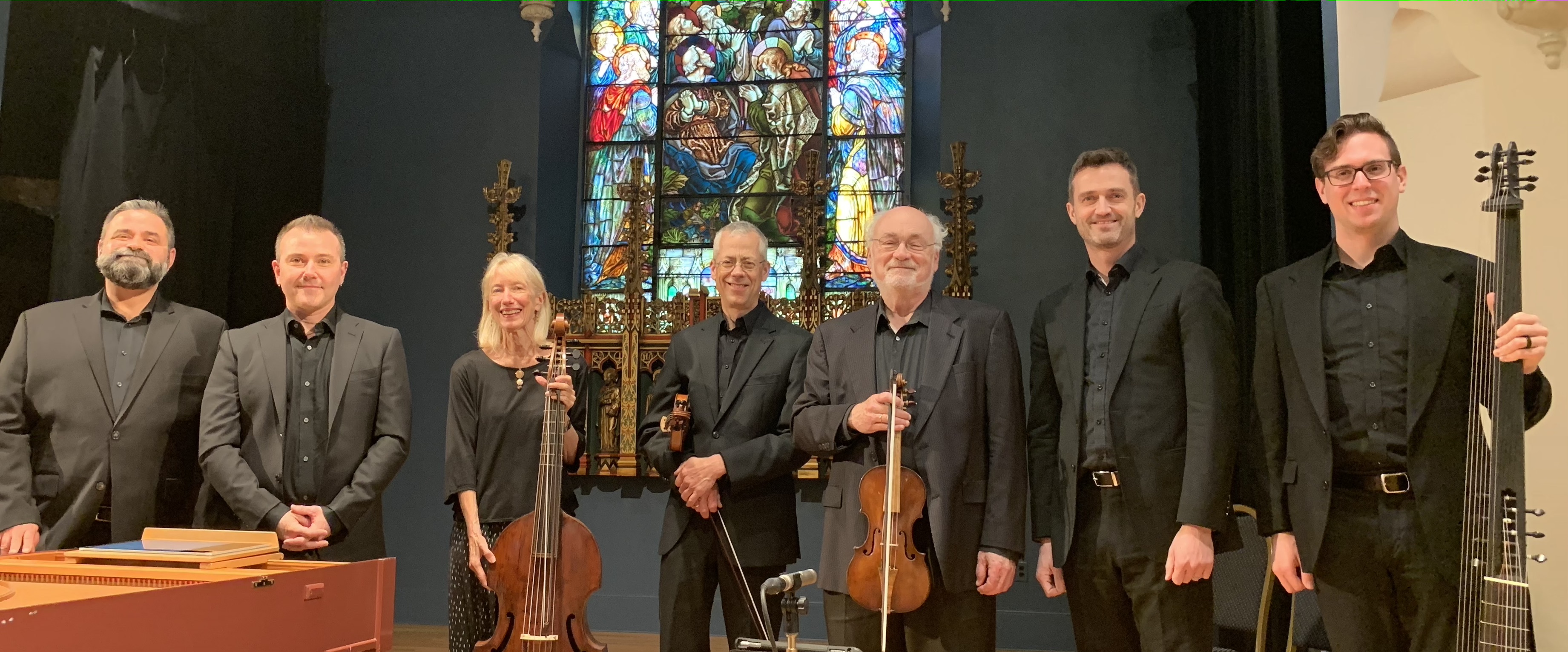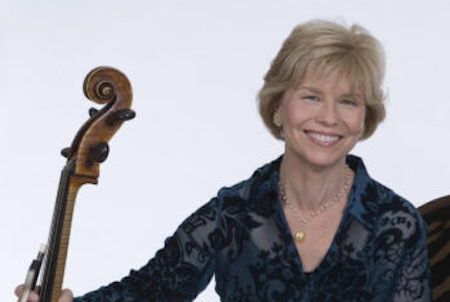
Todd Williams, natural horn; Joshua Rifkin, fortepiano; Frank Kelley, tenor
~~~
Sonata for Fortepiano and Horn, Op. 17 Ludwig van Beethoven (1770-1827)
Allegro moderato
Poco adagio, quasi andante
Rondo: Allegro moderato
Auf dem Strom (On the River) Franz Peter Schubert (1791-1828)
Intermission
Die schöne Müllerin (The fair miller-maid) Schubert
- Das Wandern Mein!
- Wohin? Pause
- Halt! Mit dem grünen Lautenbande
- Dansagung an den Bach Der Jäger
- Am Feierabend Eifersucht und Stolz
- Der Neugierige Die liebe Farbe
- Undgeduld Die böse Farbe
- Morgengruß Trockne Blumen
- Des Müllers Blumen Der Müller und der Bach
- Tränenregen Der Bachers Wiegenlied
NOTES ON THE PROGRAM
The scene of this evening’s concert is early 19th-century Vienna, and it is a time of change in the sophisticated and rich musical culture. The program features two composers whose lives overlapped for almost 30 years, living in the same city, but with very different perspectives. In fact, the two men moved in completely different circles and it is not clear that they even met. A specious source suggests that Beethoven expressed admiration for a group of Schubertian songs that were shown to him. Schubert, on the other hand, was a great admirer of Beethoven, frequently attending concerts where his music was heard. In terms of style, Beethoven, despite a tendency towards the rebellious, worked and played within the forms inherited from his Viennese predecessors, Mozart and Haydn. Schubert, steeped in romanticism, struck out in new directions in order to express the depths of unfulfilled longing.
The opening work was written for the Bohemian horn player Giovanni Punto (1746-1803; the preferred name of Jan Václav Stich). Punto adopted the Italian version of his name after escaping from his homeland and facing the risk of being persecuted by his patron Count Johann Joseph Thun, the head member of the Czech branch of a large royal family. Thun did not seem to appreciate Punto’s talents, and Punto was ambitious. After fleeing to the Holy Roman Empire, he traveled to Europe’s various music centers, eventually ending up in Vienna. Punto was also very significant to the development of the natural horn, expanding on the techniques learned from his teachers.
Beethoven’s horn sonata, op. 17, was fashioned with Punto’s extraordinary gifts in mind. The work was written in great haste, Beethoven having begun writing it the day before the first performance, which took place on April 18, 1800. It appears that Beethoven, who played the piano at the premiere, improvised the part. The opening movement is in sonata form, exploiting the “posthorn” gestures in the opening fanfare, contrasted with a lyrical, subdued second theme. The nature of the instrument—its potential and its strengths–is put to full use throughout this movement and the sonata. The second movement is a brief funeral march. The rondo theme of the finale is announced with the two instruments working in tandem. The work was a great success at its premiere and was played several times over the next year. It was dedicated to the wife of a Viennese theater director, Baroness Josefine von Braun.
In 1828, Schubert took the step of organizing a concert that would be completely devoted to his own music. It was planned for March 21, but was moved back five days to mark the first anniversary of Beethoven’s death. The Gesellschaft der Musikfreunde, of which he was a member, placed its concert hall in his section of Vienna, Tuchlauben, at his disposal. Several people in attendance testified that the house was packed. The program was mostly chamber music, but for the occasion, Schubert composed a song, Auf dem Strom, with a text by Ludwig Rellstab (1799-1860), a German poet and, later, a powerful music critic.
The lied is loaded with symbolism, much of it intertwined with Ludwig van Beethoven. The text itself relates the perspective of an individual being unwillingly swept away from his homeland and his beloved down a violent river. For the Romantics, water was a powerful force that could easily take your life or wash away your identity. This image is of course dominant in Die schöne Müllerin. Schubert was pre-occupied with images of death, but the image here is appropriate to Beethoven, who contended with forces of nature. Not only that, it is not unlikely that Schubert received this text from Beethoven’s estate (other lieder texts by Rellstab certainly came to Schubert that way). Finally, musicologists have espied musical references to specific works by Beethoven, including poignant references to the “Marcia funebre” of the third symphony.
The fives stanzas are set with the second and fourth verses sung to similar, unsettled music, while the first, third, and fifth stanzas are set to similar music, with a coda on the end. The result is an A-B-A-B1-A1 form. Notice that the piano has a constant triplet motion, which may be the rushing water (and some emotional equivalent), while the voice and horn use only duple rhythms, with no triplets, creating an ongoing, subtle tension. The horn also matches the voice in lyricism. The instrument bridges the different vocal sections with interludes and accompanies the voice. Many of the verses of the poem are sung more than once. Finally, note the progression of the narrative, particularly the final stanza, in which the poet is delivered into the “heil’gen Fernen” (sacred distance), where it is possible to contemplate the stars, and contemplate eternal realities.
The program is completed by a performance of Schubert’s masterpiece, the song cycle Die schöne Müllerin, D.795. There appear to be several opinions about when he worked on this, extending from May 1823 to May 1824. The cycle was published in 1824 as op. 25. The poems are by the Berlin lyric poet Wilhelm Müller (1794-1827), who published them in 1820 in a larger collection entitled, Seventy-Seven Poems from the Posthumous Papers of a Travelling-Horn-Player. There may be an element of autobiography in the poems.
The idea for a cycle might have partly been inspired by Beethoven’s An die ferne Geliebte, op. 98, composed 1815-16. Yet there is evidence that Schubert was aware of relationships between even random songs, and would carefully order groups of songs according to subject and key when he published them. In Die schöne Müllerin, though, this ordering moves to a completely new level and represents the finest example of the genre. This particular cycle is extraordinarily unified, both in theme and in harmonic structure. Formal structures unfold on multiple levels. Each song has a form, and the entire collection has a form. The first song, Das Wandern, in stable strophic form, acts as a prelude, followed by ten songs, ending with Mein, all of which make up the first section. Pause is a kind of interlude, followed by a prelude to the second section, Mit dem grünen Lautenbande. Six songs make up the second part, followed by a postlude, Des Baches Wiegenlied.
The songs in the cycle are written in a popular style, which can be found in other Schubert works, such the “Trout” quintet. The tunes are memorable and the forms are often strophic, wherein the melody repeats from verse to verse. These straightforward treatments of the text, however, can include alterations, such as a shift to the minor mode in the final verse (Tränenregen). The other songs are through composed (Eifersucht und Stolz), where the music changes from verse to verse, though these songs also use much musical repetition.
The most prominent literal presence in the cycle is the brook (Bach), which runs (in more ways than one) throughout. It acts as a companion and guide to the protagonist, and ultimately his grave. The brook dominates the piano accompaniment. One of the less literal manifestations of the brook is its slow interiorization, until the listener discovers the whole cycle narrates a deeply subjective experience that has completely overtaken the poet. Other images include the color green, which evolves over the last part of the cycle. Two musical instruments, the lute (Mit dem grünen Lautenband) and the horn (Der Jäger), appear. And note the fixation on death that takes hold of the poet in Die liebe Farbe, embodied in the ceaseless F sharp in the piano.
If possible, try to listen to Die schöne Müllerin with fresh ears, with an awareness that the composer was doing something new with a familiar genre: the German song. The song is among the most intimate forms of musical expression and Schubert, working with the poetry of his contemporaries, solidified the song cycle, and helped to confirm the arrival of Romanticism and its probing explorations of the emotions.
– Joseph Orchard © 2019



